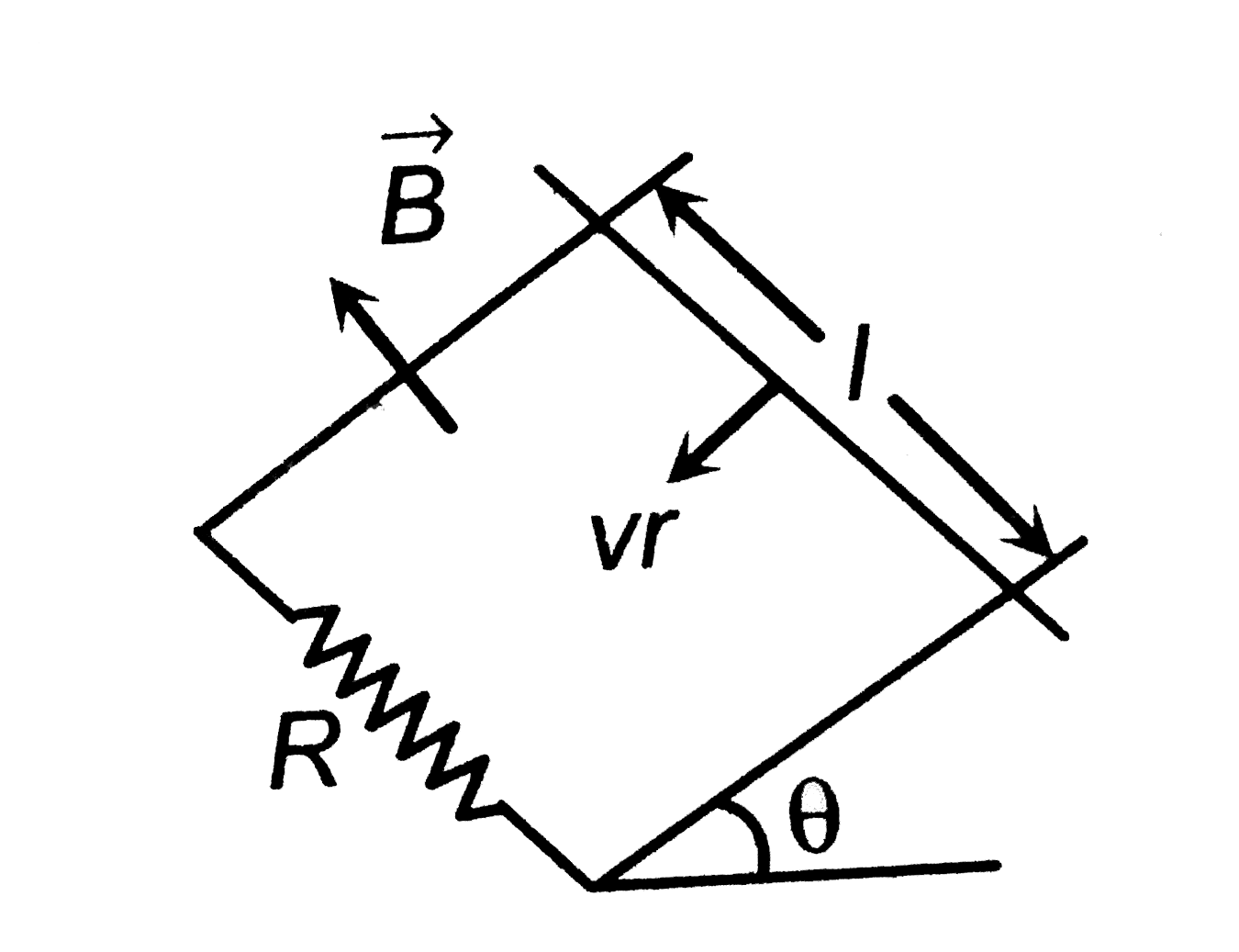A conducting rod of mass m and length l is free to move without friction on two parallel long conducting rails, as shown below. There is a resistance R across the rails. In the entire space around, there is a uniform magnetic field B normal to the plane of the rod and rails. The rod is given an impulsive velocity v0-

Finally, the initial energy 12mv20
Will be converted fully into heat energy in the resistor
Will enable rod to continue to move with velocity v0 since the rails are frictionless
Will be converted fully into magnetic energy due to induced current
Will be converted into the work done against the magnetic field
The correct Answer is:A
Due to the negative work on rod . .EK will decrease and finally become zero.
Similar Questions
A coducting rod of mass m=0.3kg and length l=4m can slide without friction on two parallel conducting rails. The conducting rails are connected via an inductancce L=3Mh. This system is placed in a region containing uniform magnetic field B=1T pointing into the plane. if the rod is given an initial velocity v0=2m/s, it oscillates with an amplituude Acm. Find the value of 2A

View SolutionShows a rod of length l and resistance r moving on two rails shorted by a resistance R. A uniform magnetic field B is present normal to the plane of rod and rails. Show the electrical equivalence of each branch.

View Solution
Knowledge Check
A copper rod of mass m slides under gravity on two smooth parallel rails l distance apart set at an angle θ to the horizontal. At the bottom, the rails are joined by a resistance R.

There is a uniform magnetic field perpendicular to the plane of the rails. the terminal valocity of the rod isAmgRtanθB2l2BmgRcotθB2l2CmgRsinθB2l2DmgRcosθB2l2A wire cd of length l and mass m is sliding without friction on conducting rails ax and by as shown. The verticle rails are connected to each other with a resistance R between a and b. A uniform magnetic field B is applied perpendicular to the plane abcd such that cd moves with a constant velocity of
 AmgRBlBmgRB2l2CmgRB3l3DmgRB2l)
AmgRBlBmgRB2l2CmgRB3l3DmgRB2l)A conducting bar of mass m and length l moves on two frictionless parallel rails in the presence of a constant uniform magnetic field of magnitude B directed into the page as shown in the figure . The bar is given an initial velocity v0 towards the right at t = 0. Then the
 AInduced current in the circuit is in the clockwise directionBVelocity of the bar decreases linearly with timeCDistance the bar travels before it comes to a complete stop is proportional to RDPower generated across the resistance is proportional to l.
AInduced current in the circuit is in the clockwise directionBVelocity of the bar decreases linearly with timeCDistance the bar travels before it comes to a complete stop is proportional to RDPower generated across the resistance is proportional to l.
A conductor rod AB of mass m slides without friction over two long conducting rails separated by a distance (Fig) At the left end the raidls are interconnected by a resistance R. The system is located in a unifrom magnetic fileld perpendicular to the plane of the loop. At the moment t=0 the rod AB starts moving to the right with an initial velocity v0. Neglecting the resistances of the rails and the rod AB, as wellas the self -indcuctance, find:
(a) the distance covered by the rod until it comes to a standsill,
(b) the amount of heat generated in the resitance R during this process.

View SolutionShows rod PQ of mass m and resistance r moving on two fixed, resistanceless, smooth conducting rails (closed on both sides by resistances R1andR2). Find the current in the rod (at the instant its velocity is v).

View SolutionA conducting rod of resistance r moves uniformly with a constant speed v in a uniform magnetic field. If the rod keeps moving uniformly, then the amount of force required is

View SolutionA conducting wire of length l and mass m can slide without friction on two parallel rails and is connected to capacitance C. The whole system lies in a magnetic field B and a constant force F is applied to the rod. Then
View SolutionA conducting wire of length l and mass m can slide without friction on two parallel rails and is connected to capacitance C. Whole system lies in a magnetic field B and a constant force F is applied to the rod. Then

View Solution